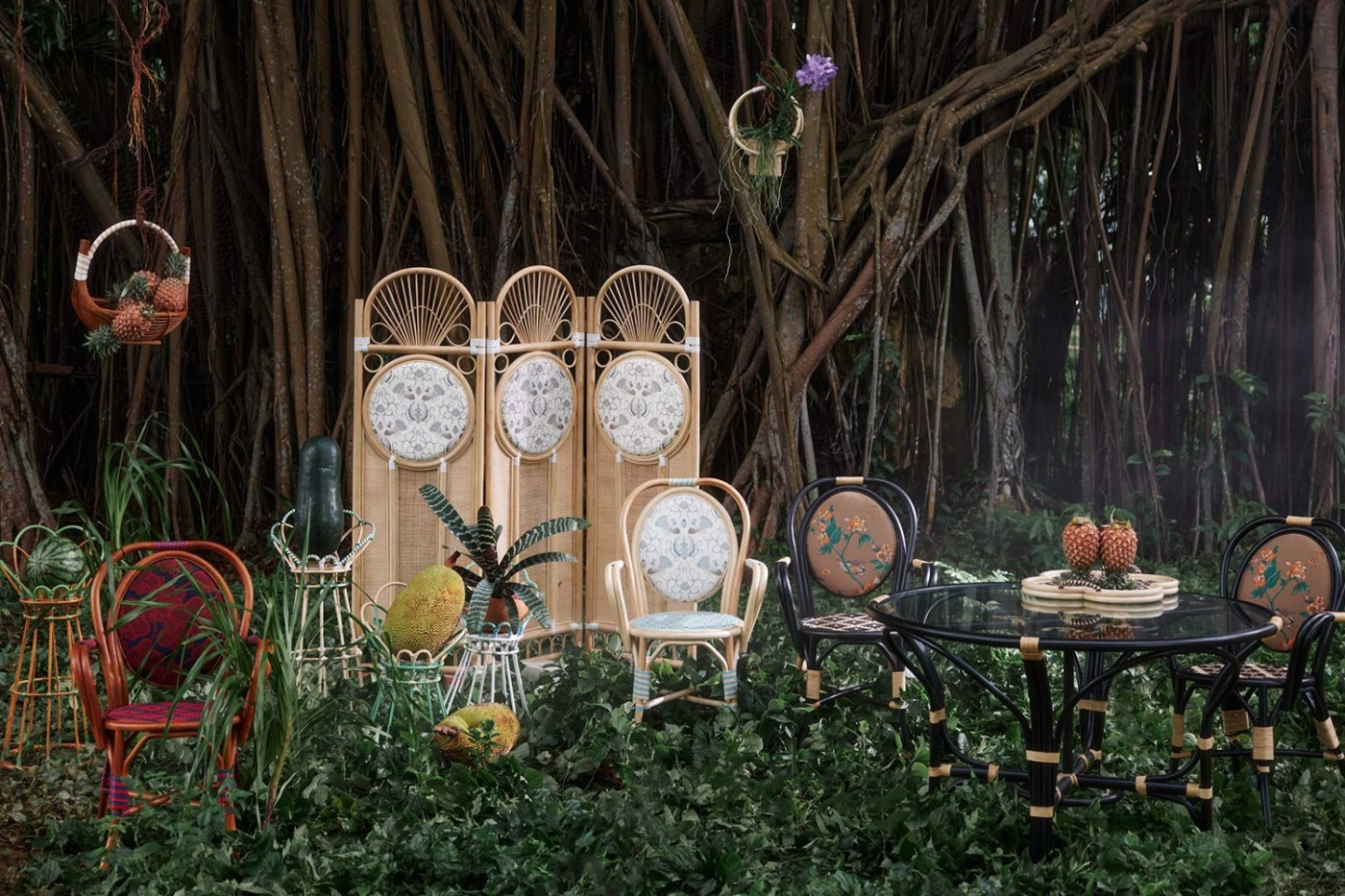Ong Shunmugam’s Rattan Furniture Collection Is a Sight for Sore Eyes
Coming off the success of the Suvarnabumi tableware range, Ong Shunmugam is now focusing on a different material—rattan. The brand will continue to produce both tableware and rattan collections, and will simultaneously continue to expand the Suvarnabumi universe of homeware at a comfortable pace.
Designed and drafted in London and Singapore, Ong Shunmugam rattan furniture and basketry is made in Malaysia, home to the greatest diversity of rattan. In the hands of veteran craftsmen, the use of Malaysia-harvested Rotan Manau, Rotan Mantang and Rotan Sega species with mixed mediums—batik and synthetic rattan from Indonesia, jacquard from China, indigenous Iban weave patterns (for the rattan chair seat)—produce technical triumphs that consciously cross fences created by time, geography and cultural matrixes.

Fresh and imaginative approaches from idea to execution are guided by a sensitivity towards different strains of rattan’s tribal lineage, design eras and stylistic families, and respect for the imminent challenges underpinning its cultivation and manufacturing.
Priscilla Shunmugam, who designed everything during lockdown in London, said, “We tried our best to take a different path by ignoring the common references of rattan furniture and upping the design value and differentiation quotient in a way that feels instinctual to us. Most of our pieces had no template to build upon, meaning we had to draw from scratch and the craftsmen had to build from our drawings. We also introduced the use of foreign elements like fabrics and batik in particular, and challenged the craftsmen with technically demanding requests to merge materials and structures together in ways that hadn’t been attempted before.”
“The other angle that mattered to us was rattan as a material. We spent months trying to understand the many strands of the full picture—the cultivation of rattan, the manufacturing challenges but also the social importance of rattan; the overriding importance of rattan to some of the most marginalised people of Southeast Asia. A combination of forest clearing, forest conversion to cash-crops and Western conservation ideals/practices are changing the industry on multiple levels, and it feels like we’re looking at both imminent biological and cultural loss. We felt that there was an avenue for us to come in and contribute our design values to the industry.”
The fabrics used for the screens and chairs are either batik fabric or jacquard fabric, and pre-order is available now.


